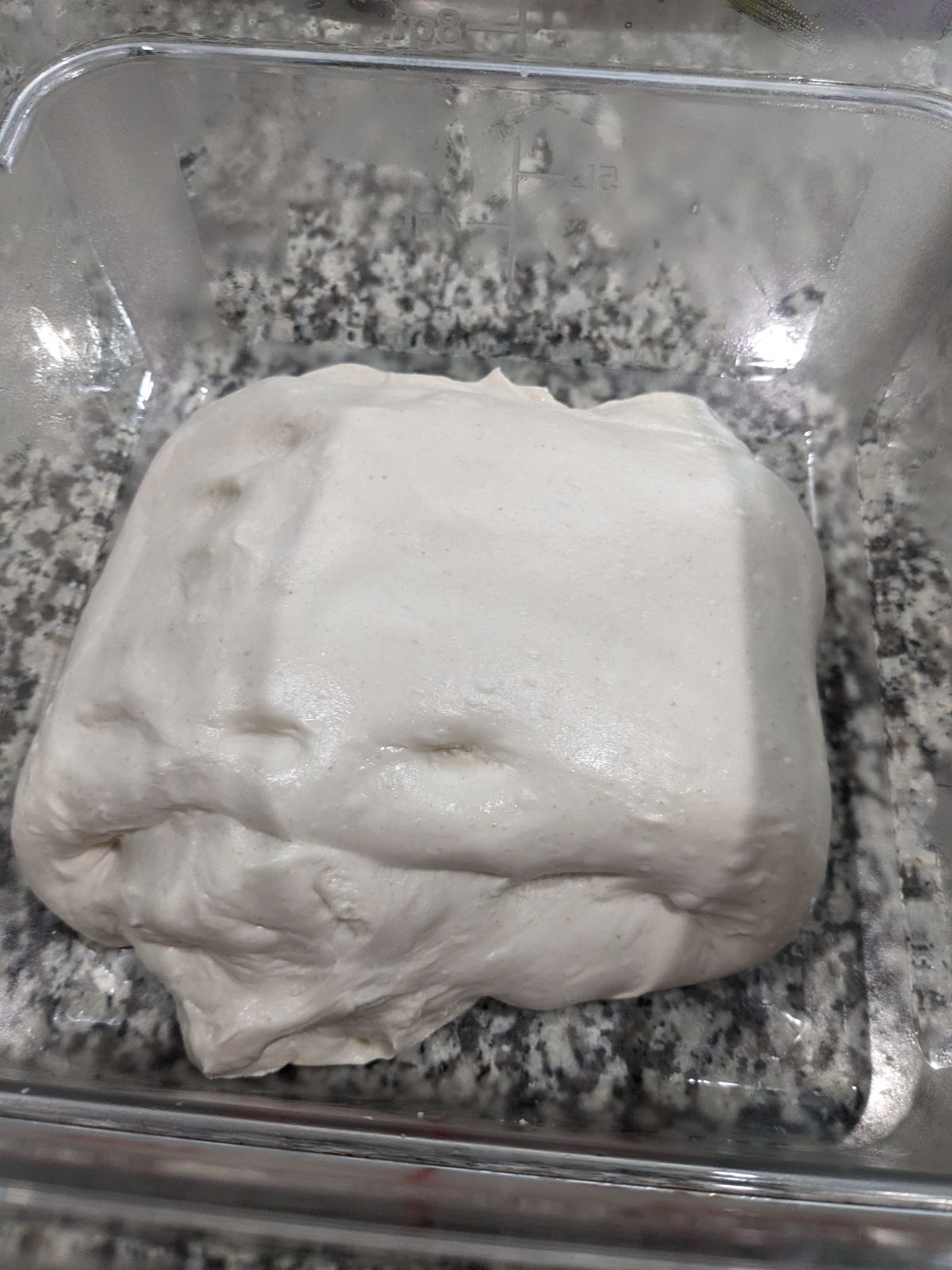04/05/2024
Aim:
Participation in Ralph Nieboer's Breadworks FB group community bake. " The Winston knot". To become capable, and proficient in shaping and baking a six strand Winston knot Bread.
Winston knot community bake.
Woke up, got out of bed and dragged a buffing rag across my head. I made my way to the kitchen and got an early start!
Photos
1. Tangzhung water roux. (150°F)
2. Rough looking dough after initial mix
3. Smooth dough after mechanical gluten development.
4. Dough is looking as a treat after stretch and fold #1.
Deviation for formula.
120g of roux used to account for bowl loss and for ease ( 6 parts at 20 g) 5 parts water, one part flour.
.165% instant yeast in place of fresh yeast
Sourdough was unfed discard.
Modus operandi
Room temperature. 72°F
The Water, warm roux, and melted fat ( 10 g bacon fat, and 40 g shorting) were mixed together to temper.
Mechanical mix: 15 minutes low Bosch Universal #1 8 minutes Bosch Universal #2.
Observations so far
The relatively low hydration dough took a bit to come together. Next time, I will hold back the fats until some gluten is developed. Aside from this the dough is now looking really nice. The elasticity is excellent. In fact I may forgo stretch and fold #2.
Stop by later for the epic finish! (I hope)

























